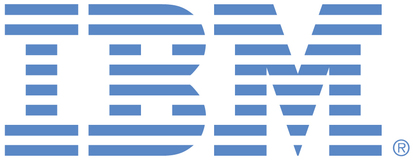
This is an IBM Automation portal for Integration products. To view all of your ideas submitted to IBM, create and manage groups of Ideas, or create an idea explicitly set to be either visible by all (public) or visible only to you and IBM (private), use the IBM Unified Ideas Portal (https://ideas.ibm.com).
Shape the future of IBM!
We invite you to shape the future of IBM, including product roadmaps, by submitting ideas that matter to you the most. Here's how it works:
Search existing ideas
Start by searching and reviewing ideas and requests to enhance a product or service. Take a look at ideas others have posted, and add a comment, vote, or subscribe to updates on them if they matter to you. If you can't find what you are looking for,
Post your ideas
Post an idea.
Get feedback from the IBM team and other customers to refine your idea.
Follow the idea through the IBM Ideas process.
Specific links you will want to bookmark for future use
Welcome to the IBM Ideas Portal (https://www.ibm.com/ideas) - Use this site to find out additional information and details about the IBM Ideas process and statuses.
IBM Unified Ideas Portal (https://ideas.ibm.com) - Use this site to view all of your ideas, create new ideas for any IBM product, or search for ideas across all of IBM.
ideasibm@us.ibm.com - Use this email to suggest enhancements to the Ideas process or request help from IBM for submitting your Ideas.

Thanks for your consideration. I agree that having this information
in the hands of support, to be imparted at need, would have avoided the
initial problem I encountered.
- Allen S. Rout
RFE Review. Thank you for taking the time to submit this idea for enhancement but unfortunately on this occasion we do not intend to take this idea forward. We appreciate the feedback and explanation of the situation you ended up in, and we realise that it can be frustrating for our users when parts of our internal architecture are exposed without clear documentation. Your submission caused us a deep discussion between Level 3 service, architecture and product management weighing up the pros and cons of greater documentation of "internals" which could rapidly become out of date but in conflict might offer value to deeply technical users in the interim. Having gone back and forth on the topic we are reluctantly closing the suggestion on the grounds that the "right" thing to have done in this instance was to provide you correct and clear guidance about which components required recycling. Having our users "guess" at potential other things to try in order to get things to work based on internals poking up through error messages could in some circumstances lead to making problems worse or harder to track down, so we're keen to maintain the position of only documenting permanent externals of the product. In the spirit of as much openness as possible on this topic, I'm also including a picture below which provides a view of some of the microservices underpinning the product which we've used on occasion in external conference presentations describing some of our architectural approaches. We debated whether a diagram like this could have been placed in to docs in response to this request but given that to provide value we would need to go significantly deeper and show a sequence of interactions between components and we really felt this is taking us in an uncomfortable direction for future maintenance and freedom of movement.